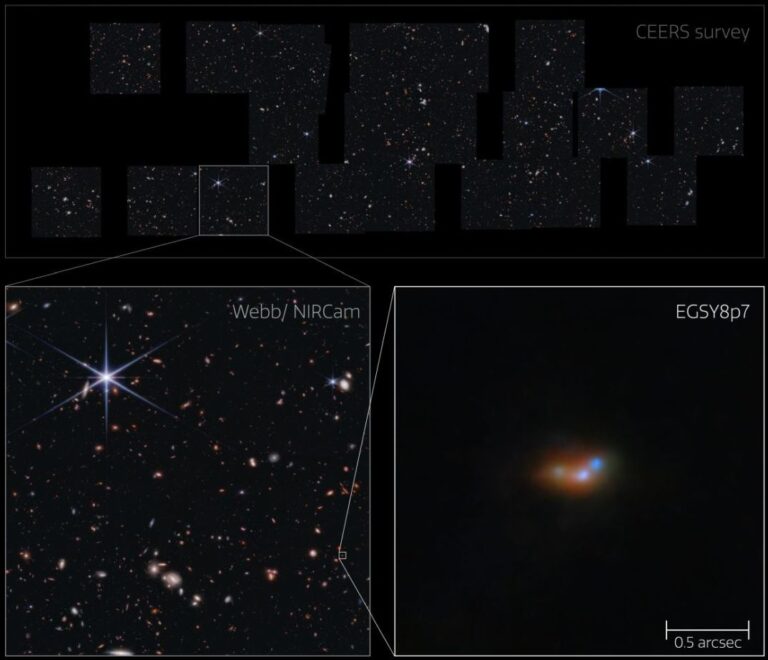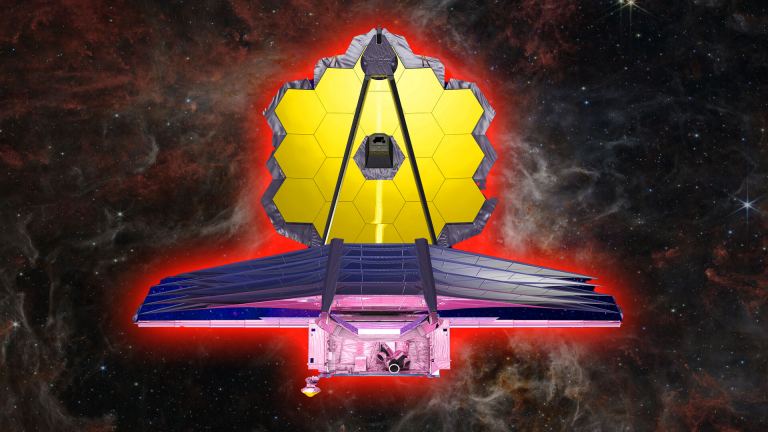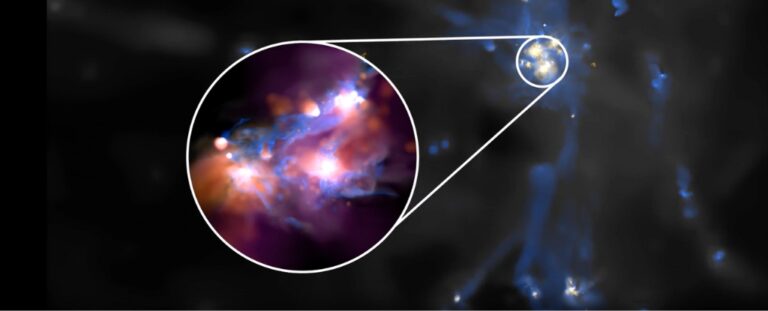Unveiling the Elusive Origin of Enigmatic Illumination in the Early Cosmos
The early stages of the Universe were characterized by darkness, primarily due to the presence of hydrogen which obstructed light. However, the emergence of the first stars marked a turning point as they emitted UV radiation, illuminating their surroundings and initiating the era known as the Epoch of Reionization.
Prior to the Universe becoming well-lit, a peculiar and enigmatic form of light called Lyman-alpha emissions managed to penetrate the darkness. Despite the prevailing opacity of the gas that dominated the early Universe, astronomers have successfully detected traces of Lyman-alpha lines before the onset of illumination during the Epoch of Reionization.
The origin of this light has remained a significant unanswered question that has intrigued many researchers and scholars.

The James Webb Space Telescope has emerged as a new player in the field of cosmology. This telescope may hold the key to unraveling the mystery behind the detection of Lyman-alpha emissions in the early universe. Previous observations have posed a perplexing question regarding the presence of light from hydrogen atoms in the early stages of the Universe, as it should have been obstructed by the pristine neutral gas that formed after the Big Bang. Numerous hypotheses have been proposed in the past to account for this unexplained emission.
However, the recently published research titled “Deciphering Lyman-alpha emission deep into the epoch of reionization” in Nature Astronomy suggests that the James Webb Space Telescope could provide an explanation. The lead author of this study is Callum Witten, a researcher affiliated with the Kavli Institute for Cosmology at Cambridge University in the UK. Witten expressed his excitement about this breakthrough, stating that the detection of Lyman-alpha emissions in early galaxies has been a significant challenge for extragalactic studies.
With the arrival of the James Webb Space Telescope, scientists hope to shed light on this enigma and gain a deeper understanding of the Universe’s evolution.

The James Webb Space Telescope (JWST) was specifically designed to have the capability to observe the early stages of the Universe. This objective was a major driving force behind the entire project.
By detecting the photons emitted by stars in the first galaxies during the early stages of the Universe’s existence, the JWST has provided us with a new perspective on the early Universe. This breakthrough is helping us find answers to numerous longstanding questions. The JWST possesses both the sensitivity and the ability to accurately determine the direction of ancient light, tracing it back to its origin.
In their research paper, the scientists state, “We have taken full advantage of the high-resolution and high-sensitivity images captured by the James Webb Space Telescope Near Infrared Camera to demonstrate that all galaxies in our sample of Lyman-alpha emitters with redshift >7 have nearby companions.” This finding carries significant implications.
Compared to previous observations made by the Hubble Space Telescope, the JWST’s images of the Lyman-Alpha emitter LAE EGSY8p68 provide a more detailed view. The JWST’s superior resolving power has revealed a cluster of smaller, fainter galaxies surrounding the brighter galaxies in LAE EGSY8p68, which were not visible to the HST. This region is bustling with intense star formation and exhibits a higher level of activity.
According to Sergio Martin-Alvarez, a co-author of the study from Stanford University, “While Hubble could only observe a single large galaxy, Webb has unveiled a cluster of smaller galaxies interacting with each other. This discovery has significantly impacted our understanding of the unexpected hydrogen emission from some of the earliest galaxies.”
The authors suggest that the presence of close neighbors in most Lyman-Alpha Emitters (LAEs) indicates that the emissions are a result of galactic mergers and the subsequent increase in star formation. This hypothesis is supported by a galactic merger simulation, which generated a simulated image resembling the actual image captured by the JWST (James Webb Space Telescope) of interacting galaxies.

The Azahar simulations were employed by the researchers to examine their hypothesis regarding galactic mergers and interactions. Through Azahar, it was demonstrated that during the formation of early galaxies, as stellar mass accumulated and stars were born, two significant phenomena occurred. Firstly, the stars emitted Lyman-alpha emissions, and secondly, they generated bubbles and channels of ionized hydrogen within the neutral hydrogen that obstructed light. Consequently, these bubbles and channels facilitated the passage of Lyman-alpha emissions.
This study reveals that the early Universe experienced a greater number of galactic mergers than previously observed prior to the launch of the JWST.
These mergers and interactions, along with the resulting abundant star formation, played a crucial role in generating the Lyman-alpha emissions and providing a pathway for them to escape the dense and opaque neutral hydrogen that was prevalent in the early Universe. Essentially, the elevated rate of galactic mergers in the early Universe is responsible for the enigmatic Lyman-alpha emissions.
However, the researchers are not finished yet. They have plans to conduct more comprehensive observations of galaxies at various stages of merging in order to further refine their hypothesis.
Do not forget to share your opinion with us to provide you with the best posts !





0 Comments